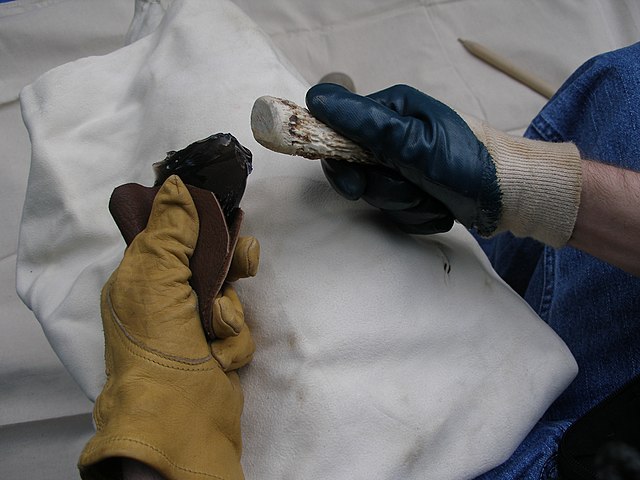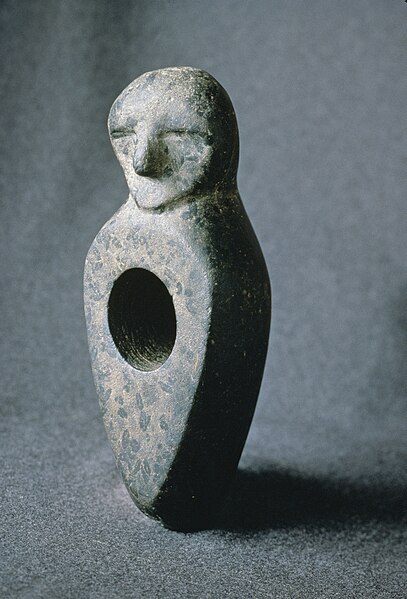In archaeology, in particular of the Stone Age, lithic reduction is the process of fashioning stones or rocks from their natural state into tools or weapons by removing some parts. It has been intensely studied and many archaeological industries are identified almost entirely by the lithic analysis of the precise style of their tools and the chaîne opératoire of the reduction techniques they used.
Mount William stone axe quarry in Australia
An example of an obsidian core that has had flakes removed using bipolar percussion.
An example of hard hammer percussion.
An example of soft hammer percussion
The Stone Age was a broad prehistoric period during which stone was widely used to make stone tools with an edge, a point, or a percussion surface. The period lasted for roughly 3.4 million years and ended between 4,000 BC and 2,000 BC, with the advent of metalworking. It therefore represents nearly 99.3% of human history. Though some simple metalworking of malleable metals, particularly the use of gold and copper for purposes of ornamentation, was known in the Stone Age, it is the melting and smelting of copper that marks the end of the Stone Age. In Western Asia, this occurred by about 3,000 BC, when bronze became widespread. The term Bronze Age is used to describe the period that followed the Stone Age, as well as to describe cultures that had developed techniques and technologies for working copper alloys into tools, supplanting stone in many uses.
Ġgantija temples in Gozo, Malta, c. 3600–2500 BC, some of the world's oldest free-standing structures
A variety of stone tools
Stone Age hand axe engraved with human face found from Kiuruvesi, Finland.
This is a Mode 1, or Oldowan, stone tool from the western Sahara








